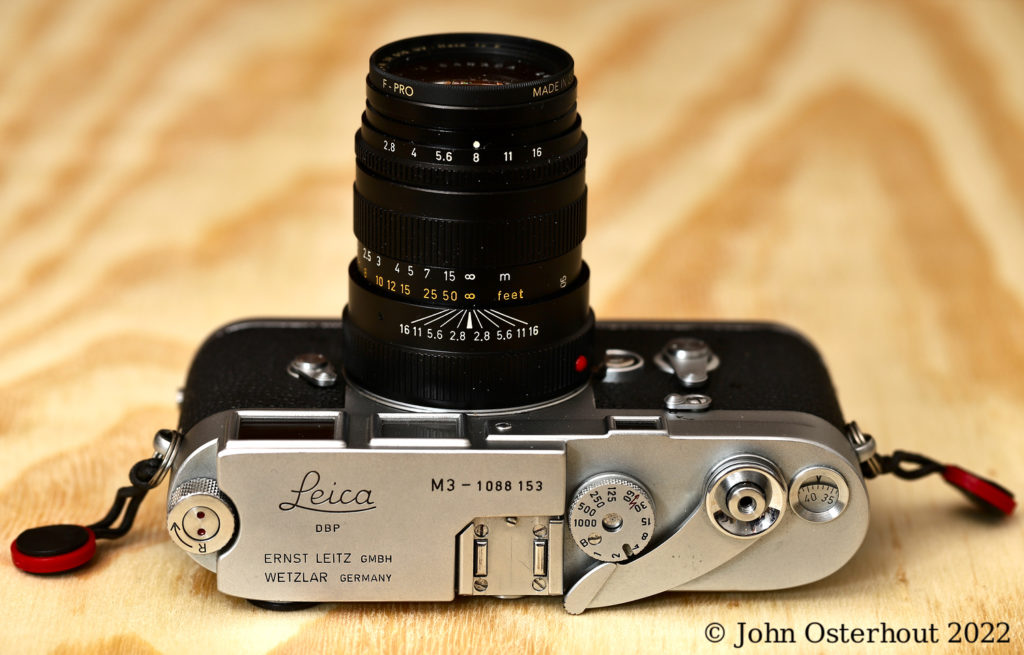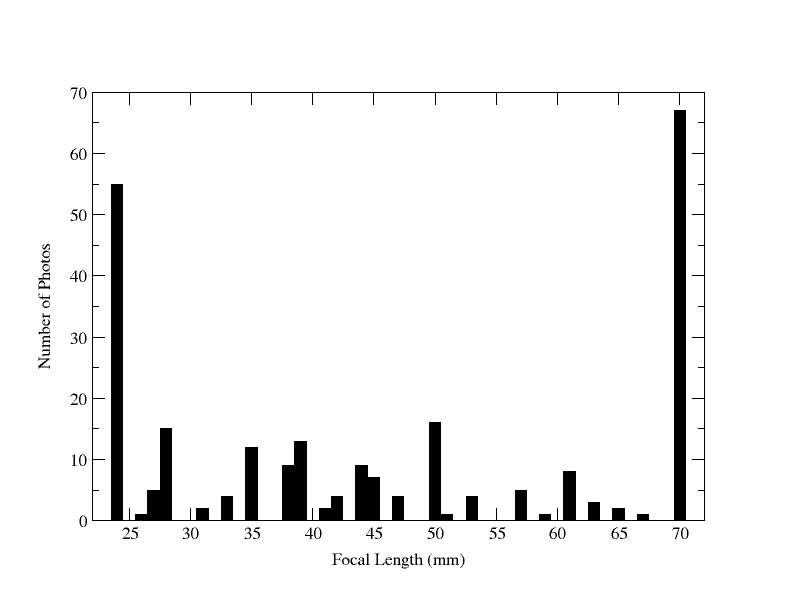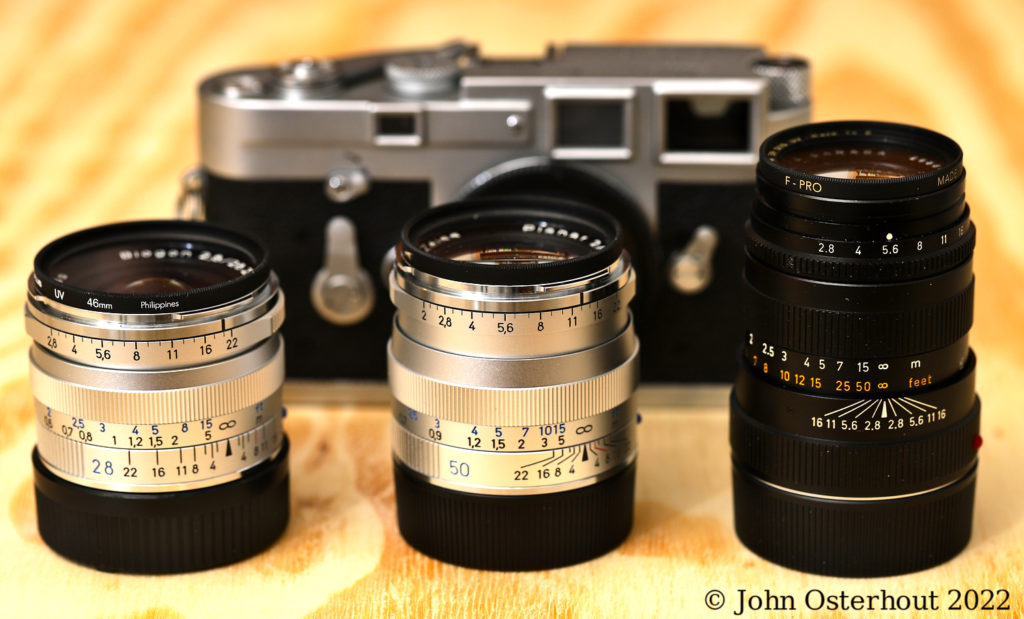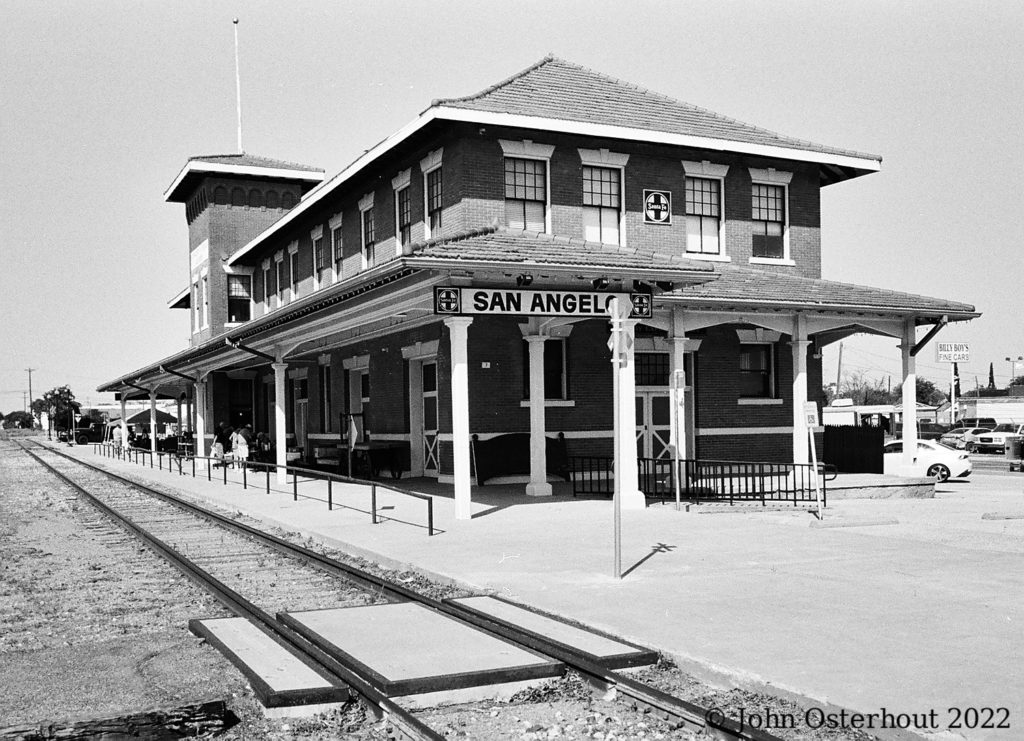
In a recent post, Choosing a Leica, I talked about my personal journey to buying a Leica M3. At the time, I wrote that I would likely use a 50mm lens most of the time since I had been a “normal lens” kind of guy for most of my life. While writing the post, I never considered that I might have more than the 50mm lens for the Leica M3.
But of course, I couldn’t stop thinking “What if… .” (This is a bad case of GAS, Gear Acquisition Syndrome). So I looked at the 90mm lens options for Leica and finally decided that the Leica Tele-Elmarit f2.8 (the “skinny” model, made from 1974-1990) was just the ticket. Mostly, I liked that it is a very compact lens. The “tele” part of the name means that it is a true telephoto design and that the length of the lens is shorter than the focal length. I started looking on ebay.
As fate would have it, I found a “near mint” lens within ten minutes of starting my search. The price was “correct”. The lens was the version made in Canada and so was probably cheaper than the German version. I say probably because I couldn’t find a German version for sale anywhere. I have read that the only difference between the lenses is the Canada/Germany thing and I’m interested in taking pictures rather than collecting. After lot more looking (call it due diligence), I decided to buy the lens. The lead picture of this post shows my Leica M3 with the Tele-Elmarit.
So now I own a 50mm and a 90mm. I have to add a wide angle lens to round out a three-lens kit. But what focal length to buy.
Choosing a Wide Angle Lens (Geeky)
Do I add a 35mm? Or something wider: 28mm, 24mm, 20mm. No matter what lens I pick, I’m going to have to get an external viewfinder to go with it since the Leica M3 doesn’t have frame lines for lenses wider than 50mm. I’ve got choices, but which to pick?
You might know that I am a retired scientist. So what do scientists do? They analyze data. I just need some data…
In my post, Five Frames of the Wizarding World, I showed photos from a trip to Orlando for the stated purpose of attending a scientific meeting. I took a lot more than five shots. During this trip, I was the consummate tourist. I packed a Canon 6D II wearing a Canon EF 24-70mm f/2.8L II USM zoom. Like any good tourist, I planted my feet and used the zoom to frame my subject. So these data are representative of vacation photos and might be able to help me choose a lens to round out a kit for vacations and general photography.
Excluding duplicate shots, I had 240 photographs to analyze. I graphed them up, number of pictures as a function of the focal length at which it was taken. Here’s the graph:

The main takeaway from this graph is that I shot almost half of my photos at either 24mm or 70mm, one end or the other of the zoom range. It is likely that some (most?) of the shots at the extremes were at those focal lengths because there wasn’t anything shorter or longer. My second lens is the 90mm which is already beyond the high end. What to choose for the other end?
I decided on 28mm. The main reason is that the M6 and more modern Leica cameras have 28mm frame lines. In the event that I ever get an M6, M-a or MP, I’ll be good to go. Until then I’ll have to use an external 28mm finder.
The Three-Lens Kit
To round out my kit I got a Zeiss Biogon T* 28mm f/2.8 ZM. I already owned the Zeiss 50mm and the lens is new so I went with Zeiss. In order to use this lens, I had to find an external finder. I found one from Canon for not too much cash and I’m good to go. Here is the kit:

Left to right are the Zeiss Biogon T* 28mm f/2.8 ZM, the Zeiss Planar T* 50mm f/2 ZM, and the Leica Tele-Elmarit 90mm f2.8. The Leica M3 body is lurking out of focus behind the trio of lenses.
OK, But Where are the Pictures?
Oh, right. Pictures.
ZEISS Biogon T* 28mm f/2.8 ZM

This is the Railway Museum of San Angelo. The occasion of this photo was an event, Railway Days, celebrating 25 years of Museum Operation. More photos of this event will be presented in a future post. The Railway Museum is housed in the historic depot of the Kansas City, Mexico, and Orient Railroads (KCM&O). The depot was constructed in 1909 and 1910.
Zeiss Planar T* 50mm f/2 ZM

This is the Ruffini Chapel located in Historic Old Town off of Orient Street and West Avenue B. This is a replica of the original chapel of the First Presbyterian Church of San Angelo. The chapel was designed by the famous San Angelo architect, Oscar Ruffini, and the original chapel was constructed in 1886. The chapel was rebuilt in 2019 from the original plans and is available for rental.
You can see some color photos from the Zeiss 50mm in a previous post, Five Frames with a Leica M3 and Kodak Portra 400.
Leica Tele-Elmarit 90mm f2.8

Here’s a pair of lamps on the side of a commercial building lurking above the drive through. I liked the dark curvy lamps and the dark curvy shadows.
More with all the lenses later.
These photos were all shot with a Leica M3 body and the indicated lenses. The film was Kodak Tri-X in each case. The film was developed and scanned by Holland Photo in Austin, Texas. I had intended to develop all the B&W film myself. It is ironic that after years and years as a chemist, I have bogged down at the thought of mixing chemicals! The scans were processed in Darktable, which is open source software (free) available for Windoze, MacOS, and Linux.